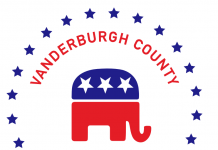Oklahoma City is moving ahead with development of a new $250 million convention center amid fierce national competition that pits what industry observers say is an oversupply of meeting space against shrinking demand.
The St. Louis Renaissance Hotel, to the left of the St. Louis Convention Center, was opened in 2002 and has seen occupancy hover at under 50 percent. The hotel was taken over by bond holders in 2009. Photo provided by St. Louis Convention & Visitors Commission
The consequences include a sharp drop in bookings at one of America’s largest convention centers in Chicago.
Heavily subsidized conference hotels, meanwhile — some also built after receiving upbeat projections from Conventions, Sports & Leisure — have experienced financial losses and in some cases debt defaults.
The same firm provided a report for the Greater Oklahoma City Chamber that the Oklahoma City Council relied on in deciding to ask voters to approve $250 million for a new convention center downtown.
Even as that report was being used to argue the case for the largest single MAPS project investment to date, the Destination Marketing Association was telling The Wall Street Journal that the country’s convention industry was a “buyer’s market†that suffered excess capacity.
Since then, the market demand has plummeted, with the Center for Exhibition Industry Research reporting attendance below what it was in 2000.
Former Mayor Kirk Humphreys, who oversaw expansion of the Cox Convention Center in the late 1990s and is on the MAPS 3 committee overseeing planning for a new convention center, is among those who say a new facility is needed regardless of the performance of the national market.
“The Cox Center, by the time the new one gets built, it will be 50 years old,†Humphreys said. “If you need to know why we need a new one, just walk into the south entrance of the Cox Center. It’s serviceable, but it’s not who we are as a city. We can do better than that. In most other areas of our city, we’ve moved forward the past number of years, and it’s time we move forward with this.â€
Others, however, are not so certain.
For the past year, Ward 2 Councilman Ed Shadid has been calling on the city to slow down plans for a new convention center, suggesting the city erred by never doing its own needs assessment study or updating what was completed for the Greater Oklahoma City Chamber five years ago.
Even more worrisome to Shadid is what he argues was not well explained to voters — that for a new convention center to be successful, it will require the city to pay and build a conference hotel and acquire another $200 million for a second-phase expansion that consultants say is necessary for the city to achieve its goal of competing with bigger regional cities for business.
“This should be the most publicly vetted, well studied project of all the MAPS projects or anything in recent memory,†Shadid said. “To be this far along, and to not have any publicly available study on convention center economics or a needs assessment is not acceptable.â€
Fierce competition
A recent report by The Wall Street Journal may give some Oklahoma City civic leaders more cause for concern. Representatives of convention centers in Boston, Atlanta, Louisville, Ky., and Reno, Nev., all described a fierce competition in which bookings were being given away and subsidies were being thrown in for meeting and festivities costs.
Heywood Sanders, a professor of public administration at the University of Texas at San Antonio and a veteran researcher on the convention industry, warns that Oklahoma City is about to invest in an industry where the supply of meeting space expanded by 35 percent since 2000 while attendance — demand for the space — dropped by 1.7 percent.
At issue not just with Shadid, but also officials in other cities including Boston and Philadelphia, is the veracity of reports compiled by Convention Sports & Leisure, which provided a similar report and projections to Tulsa civic leaders.
A 2011 Boston Globe investigation reported Minneapolis expanded its convention center at the advice of Convention Sports & Leisure and was then beset with low occupancy and huge deficits. In Washington, D.C., a center that opened in 2003 was producing much less hotel business than Convention Sports & Leisure had predicted.
Sanders noted that after an expansion at one of the nation’s largest convention centers, McCormack Place in Chicago, it is seeing attendance that is hundreds of thousands less than it was a decade ago before the expansion.
Sanders warned Oklahoma City will face similar disparities.
“Among the things that strike me, if you go back to the 2009 CSL report to Oklahoma City, that lovely chart they have seems to show the convention business growing steadily with just a little blip in 2001,†Sanders said. “That is a misrepresentation of the actual industry performance. The underlying numbers don’t show anything like that.â€
As an example, Sanders quotes numbers for the National Restaurant Association, which has met at McCormack Place for a half century. According to Sanders, the conference drew 105,000 attendees in 1993, 97,000 in 1998 and this year attendance totaled 61,000.
Sanders pointed to list one city after another that have ordered up a study by Convention Sports & Leisure and used such reports to spend millions on an expansion, only to see a drop rather than a rise in business.
Oklahoma City could benefit from rebound
John Kaatz, author of the Convention Sports & Leisure study written for the Greater Oklahoma City Chamber, said that his firm’s estimates are “conservative.†He agrees that the industry went into a slump over the past few years — but insists a solid rebound is under way.
Source NewsOK



